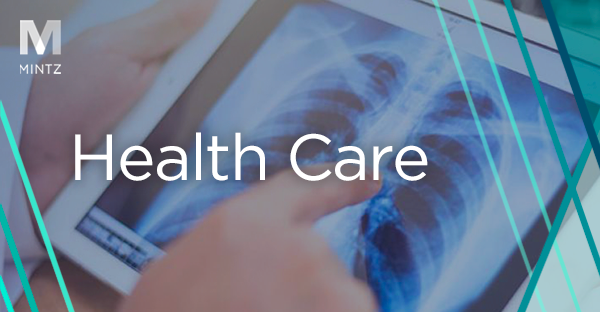
COVID-19 Viewpoints
Filter by:
The Government's Long Game for Investigating COVID-era Relief Fraud
September 16, 2022 | Blog | By Eoin Beirne
Various COVID relief programs pumped $5 trillion into the economy, incredibly quickly, and with relatively minimal vetting. Within that enormous and necessary set of economic stimulus packages was likely the greatest amount of fraud committed on the government in the shortest amount of time in history. This article takes a look at the various issues facing government agencies as they attempt to investigate allegations of PPP fraud related to pandemic-era applications and the role of the Pandemic Response Accountability Committee in coordinating and overseeing these investigations.
Read more
HRSA Demands Repayment from Providers that Failed to Comply with Provider Relief Fund Reporting Requirements
April 11, 2022 | Blog | By Jean D. Mancheno
Under the Coronavirus Aid, Relief, and Economic Security Act (CARES Act), the Health Resources and Services Administration (HRSA) of the Department of Health and Human Services (HHS) is authorized to distribute funds from its Provider Relief Fund (PRF) to certain providers. These providers can then use the funds to support COVID-19 prevention, preparedness, and response, or to alleviate loss of patient care revenue. However, HRSA requires that providers receiving PRF funds comply with certain requirements, including post-payment reporting requirements. HRSA is now notifying providers that failed to comply with the reporting requirements that they must return the PRF funds they received.
Read more
DHS to End Temporary COVID-19 Policy on Expired List B Identity Documents on May 1, 2022
April 4, 2022 | Alert | By Arash R. Bahar
DOJ Keeps Focus on COVID-19 Related Fraud with Appointment of Director
March 14, 2022 | Blog
The U.S. Department of Justice (DOJ) has continued to investigate and prosecute alleged COVID-19 related fraud over the past two years since the pandemic began. On Thursday, DOJ announced the appointment of a Director for COVID-19 Fraud Enforcement, who will lead DOJ’s enforcement efforts in this area. Associate Deputy Attorney General Kevin Chambers will fill this position.
Read more
Snapshot of Another Much-Too-Busy Year for FDA Before 2022 Really Gets Started
January 5, 2022 | Blog | By Joanne Hawana , Benjamin Zegarelli
It is, somewhat amazingly, the beginning of January again. During this time of year we typically publish a series of blog posts that recap the most interesting Food and Drug Administration (FDA) activities over the prior 12 months and consider what the agency is likely to focus on going forward. This year, however, we’re taking a different approach and will be providing more of a birds-eye view of our favorite federal agency as it stands as of the end of 2021. Because there is just too much going on at the administrative, enforcement, and legislative levels to get into the details of everything in one fell swoop. So make sure you’re signed up for Mintz Health Law Viewpoints to receive updates throughout the year on issues as they develop.
Read more
FDA Issues Draft Device Guidance in Preparation for the End of the Public Health Emergency
December 27, 2021 | Blog | By Benjamin Zegarelli
On December 22, 2021, FDA took another step in rolling back enforcement policies implemented in response to the COVID-19 pandemic by publishing guidance documents describing the regulatory requirements for devices that were authorized under the emergency use authorization process and those under temporary FDA policies implementing specific enforcement discretion during the pandemic once the Public Health Emergency for COVID-19 ends. The Transition Plan Guidances will help device manufacturers prepare for the end of the PHE and continue to commercialize devices necessary for the long-term response to COVID-19.
Read more
New York City Releases Private Employer Vaccine Executive Order
December 16, 2021 | Blog | By Evan Piercey, Corbin Carter, Michael Arnold
New York City has released its anticipated vaccine order for private businesses alongside a workplace vaccine requirement webpage containing interpretative guidance and other helpful links. The new vaccine order generally requires employers to obtain proof of a worker’s vaccination before allowing them entry into the workplace. As we previously reported, Mayor Bill de Blasio described this mandate as a “preemptive strike” made in an effort to confront looming challenges posed by the Omicron variant and the holiday season. We summarize relevant portions from the order and interpretative guidance below, and note that NYC employers will need to take several affirmative actions to come into compliance in the next couple of weeks.
Read more
OSHA Vaccine Rule Blocked Permanently by Fifth Circuit, But Judicial Review Will Continue
November 19, 2021 | Blog
A three-judge panel on the Fifth Circuit Court of Appeals has now permanently blocked OSHA from implementing and enforcing its vaccine rule, which impacts employers nationwide. This is not the end of the judicial review road for the vaccine rule. Challenges to the rule were filed in multiple federal circuit courts across the country. Regardless of the outcome, the Supreme Court will likely have the final word.
Read more
The End Is (Somewhat) Nigh: FDA Begins Rolling Back Enforcement Policies Implemented in Response to the COVID-19 Pandemic
November 16, 2021 | Blog | By Joanne Hawana
Over the course of 2020, the Food and Drug Administration (FDA) released numerous guidance documents covering diverse areas and aimed at increasing the availability of various medical products to prevent, treat, and diagnose COVID-19. Some of our prior blog posts on those pandemic response activities implemented by FDA can be found here and here. In all of those actions, FDA made clear that the agency’s enforcement discretion policy was temporary, or that an emergency use authorization (EUA) was being granted pursuant to statutory criteria that include a requirement that there be “no adequate, approved, and available alternative to the product,” which by definition renders the EUA temporary, as well. Accordingly, several EUAs granted to diagnostic tests, therapeutic products, and medical devices have been revoked based on a determination that all of the criteria necessary to support emergency authorization under the statute can no longer be met. And although the public health emergency is not over even as 2021 comes to a close, FDA has kept its promise to continually reassess circumstances and needs on the ground in the United States and to modify policies and emergency authorizations as necessary.
Read more
OSHA Vaccine Rule Temporarily Blocked By Federal Appeals Court
November 7, 2021 | Blog | By Delaney Busch
A Federal appeals court has temporarily blocked OSHA’s vaccine rule. Citing to potential “grave statutory and constitutional issues” with the rule, the 5th Circuit promised an expedited judicial review of whether to block it permanently. We expect that even after the 5th Circuit rules, the Supreme Court will be asked to weigh in. We also, of course, will be closely monitoring this legal development, which impacts employers nationwide. Although the future of the OSHA vaccine rule is unknown at this time, employers should continue to take steps to come into compliance given the short compliance window provided by OSHA if the rule is upheld.
Read more
EEOC Updates Religious Accommodation and Vaccine Mandate Guidance
October 28, 2021 | Blog | By Michael Arnold, Danielle Bereznay, Corbin Carter
The EEOC has updated its technical guidance and answers to add six religious accommodation-based questions and answers in a new Section L (Vaccinations – Title VII and Religious Objections to COVID-19 Vaccine Mandates). The updated guidance does not necessarily break new ground in this area; instead, it mostly reinforces several preexisting concepts, including (i) how employers should analyze the religious nature and sincerity of an employee’s belief; (ii) what might constitute “undue hardship”; and (iii) the need for employers to analyze each accommodation request on a case-by-case basis. We break down the updated guidance further below.
Read more
Biden Administration Announces End to COVID-19 Travel Bans
October 26, 2021 | Alert | By William Coffman
Read about the October 25, 2021 Presidential Proclamation confirming that it will end all COVID-19 travel bans on Monday, November 8 and how this policy change will impact nonimmigrant travelers to the U.S.
Read more
Webinar Recording: Changes to the COVID Travel Ban
October 21, 2021 | Webinar | By Maryanne Kline, John Quill
The Mintz Immigration Practice focused on the evolving immigration landscape and the anticipated changes to US immigration policies as of October 2021 in this 30-minute session.
Read more
NY HERO Act Plans ACTIVATED – Employer Action Required
September 27, 2021 | Blog | By Corbin Carter, Michael Arnold
The New York State Commissioner of Health has designated COVID-19 as a “highly contagious communicable disease that presents a serious risk of harm to the public health.” This means that the HERO Act’s many requirements are no longer theoretical: Almost all private New York employers must now activate their HERO Act-compliant workplace exposure prevention plans and take numerous implementation steps required by the recently enacted law. Per the Commissioner’s designation notice, the “activation” designation will remain in effect until at least September 30, 2021, at which point the Commissioner will review the level of transmission of COVID-19 in New York State and determine whether to continue this designation.
Read more
OIG Report Highlights Importance of Telehealth in Providing Behavioral Health Services, but Emphasizes Need for Additional Oversight
September 23, 2021 | Blog | By Cassandra Paolillo
As we’ve previously covered, the COVID-19 pandemic has brought about a major increase in the prevalence of telehealth services, due in large part to regulatory flexibilities at the federal and state levels. Beginning in March 2020, state Medicaid programs across the country loosened requirements for coverage of telehealth services provided to Medicaid beneficiaries, reducing barriers by allowing audio-only services and covering a broader scope of services delivered via telehealth. The increase in telehealth has resulted in improved access to behavioral health services in particular, but according to an OIG report issued earlier this week, state Medicaid programs will need to increase their oversight of these services if the telehealth flexibilities become permanent.
Read more
FDA and FTC Coordination Appears to Be Escalating
September 15, 2021 | Blog | By Joanne Hawana
Agencies of the federal government with a consumer protection mission have always tended to work closely together and to share information, but the COVID-19 pandemic has made those cooperative efforts even more visible to the general public. We blogged in 2020 about the increasing use of warning letters jointly issued by the Food and Drug Administration (FDA) and the Federal Trade Commission (FTC) Division of Advertising Practices in the apparently never-ending fight against fraudulent COVID-19 products (see prior post here). While coordinated FDA and FTC enforcement activities specific to the ongoing public health emergency continue at a brisk pace – as of September 9, 2021, FDA has issued more than 200 warning letters to companies claiming that a product is an effective cure, treatment, or preventative for COVID and the FTC has issued more than 400 pertaining to unsubstantiated health claims for COVID-related products, with many of those being signed by both agencies – these powerhouse regulators also appear to have become more comfortable with announcing joint actions in non-COVID contexts. This trend makes it even more important for manufacturers and marketers of consumer-facing products to be fully aware and compliant with all of their legal and regulatory obligations.
Read more
Telehealth Update: New Bill Seeks to Understand the Impact of Telehealth During COVID-19 as State COVID-19 Orders Expire
August 11, 2021 | Blog | By Cassandra Paolillo
As previously discussed, many of the telehealth flexibilities in place during the COVID-19 pandemic are set to expire at the end of the federal Public Health Emergency (PHE), unless federal and state legislators act to make the changes permanent. A recent bill introduced by Representative Robin Kelly (D-IL) suggests that Congress is interested in expanding access to telehealth services for Medicare and Medicaid beneficiaries if the benefits of increased access to telehealth can be demonstrated. According to a press release issued by Representative Kelly’s office, “Telehealth has the potential to help equalize healthcare access for underserved populations. However, we need data to understand utilization, cost, fraud, privacy and how to serve those left behind by the digital divide.”
Read more
Bioethics in a Pandemic: Misinformation and Mandates
August 9, 2021 | Blog | By Bridgette Keller, Amy Martin
As the spread of the Delta variant of COVID-19 and the reality of inconsistent vaccine uptake lead to growing case numbers across the country, many of us are wondering, how did we get here and what’s next?
Read more
Webinar Recording: COVID-19: An Update for Families and Children as Restrictions Are Eased
July 28, 2021 | Webinar
Throughout the COVID-19 pandemic, information has continuously evolved surrounding the virus and its effects on nearly every aspect of family and public life, particularly on families trying to balance work with remote or in-person learning for their children. In this webinar, two experts from MassGeneral Hospital for Children (MGHfC) discussed current updates surrounding the effectiveness and safety of COVID-19 vaccines for children.
Read more
Bipartisan VALID Act Re-Introduced in Congress: Is Diagnostics Reform on the Horizon?
July 13, 2021 | Blog | By Joanne Hawana , Benjamin Zegarelli
In our most recent year-end blog post on devices and diagnostic products at the Food and Drug Administration (FDA), we summarized the tumultuous events of 2020 with respect to laboratory developed tests (LDTs) and clinical laboratory testing in general during the COVID-19 public health emergency. We highlighted at the time an August 2020 Trump Administration order barring FDA from requiring premarket review for any LDT unless the agency goes through formal rulemaking procedures. We also speculated that although “the regulatory framework and policies surrounding LDTs will be a prominent topic of debate in 2021…there will be no quick resolution of these issues, either at a legislative or agency policy level, in the short term and that LDTs will likely remain in a gray area of FDA regulation and policy for the foreseeable future.”
Read more




